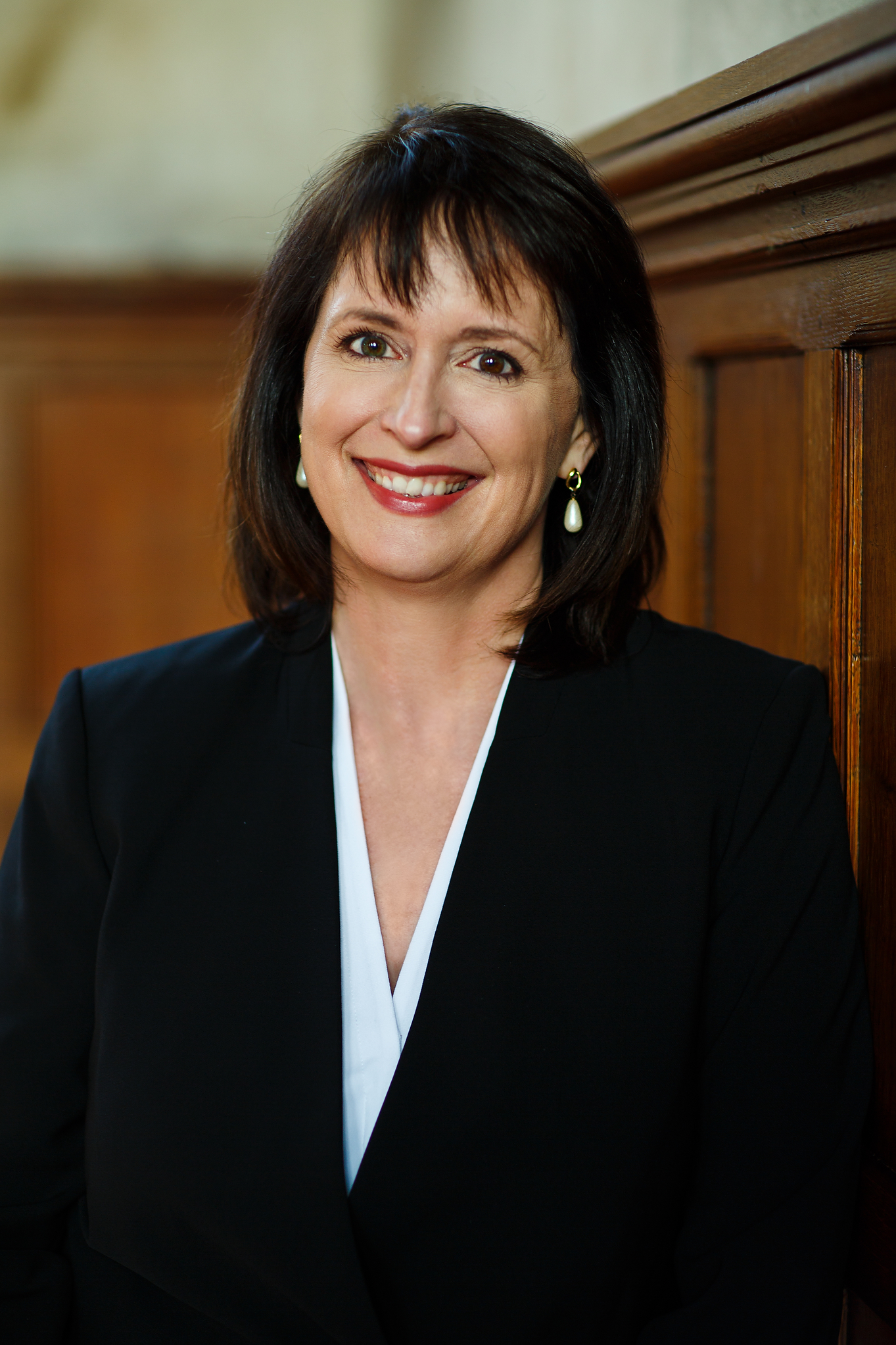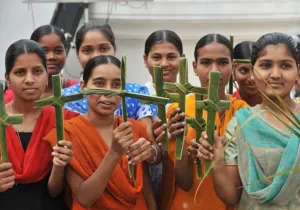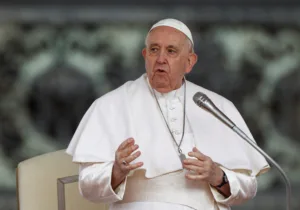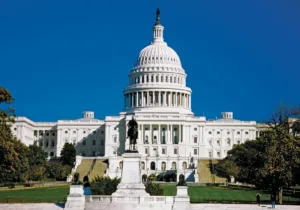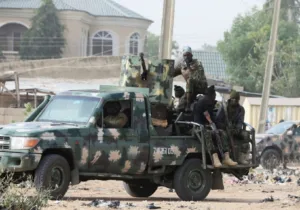Pope Francis already inspired the beleaguered Christian community in Iraq by prioritizing them for his first trip, starting on March 5, since the COVID-19 pandemic shut down travel. While most Iraqi Christians are Chaldean Catholics in communion with the Vatican since the sixteenth century, other denominations share in the excitement. Many Christians in Iraq hope that the world’s attention on them, even if just for a few days, will shine a light on the reality of their precarious situation.
In 2014, the world watched as the so-called Islamic State swept through the Nineveh Plains of Iraq, targeting Christians, Yazidis, and other religious minorities. The terrorists killed thousands and committed unspeakable atrocities that governments later designated as genocide. These crimes included beheadings, torture, kidnapping, sexual violence, and even crucifixions. Over two million fled, mostly to the Kurdistan Region of Iraq, as ISIS built its Islamist caliphate that eventually included 40 percent of the country and a third of Syria.
Few people realize, however, that Christians began leaving the region long before ISIS arrived. To reverse this trend, Christians and Yazidis need a permanent say in their governance and security.
Problems for Christians in Iraq before ISIS
The US invasion and the subsequent removal of President Saddam Hussein in 2003 brought seismic changes to the country. At that point, Christians made up six percent of the population at 1.5 million. While Saddam Hussein ruled Iraq with an iron fist, he deterred anti-Christian violence, even though their fellow citizens marginalized and subjected them to a campaign of Arabization. Many Christians remember that time for its level of safety and protection.
As the US propped up the mainly Shia government that replaced Hussein’s Ba’athist regime, sectarianism and extremism rose, increasing persecution against Christians, Yazidis, and other religious minorities. These Christians were in Baghdad and throughout the country, but their main presence historically has been in the Nineveh Plains. This area is home to some of the most diverse religious and ethnic populations in the region, including Kurds, Shabaks, Kaka’i, Turkmen, and Yazidis.
The one constant for the US government in Iraq has been its solid relationship with the Kurdistan Regional Government (KRG) in northern Iraq. It achieved autonomy when the US and coalition forces enforced a no-fly zone in the aftermath of the Gulf War in 1991. The region has been a mostly safe haven for US forces and provided refuge to most people fleeing ISIS. Even today six years after they fled, over 700,000 remain in internally displaced persons (IDP) camps in the region, which the Kurdish government largely funds.
The Iraqi constitution, which the US promoted and the country adopted in 2005, presents another problem for Christians and other minorities. Per Article 140, Iraq deferred one of the most difficult decisions, the disputed territories, to 2007. These places are in-between areas that both the Iraqi government and the KRG claim, and they include much of the Nineveh Plains and other regions where minorities live. What seemed like a minor oversight created security conditions that allowed the ISIS caliphate to rise and instability to continue.
Because the deteriorating environment that began in 2003 pushed Christians to disperse globally, by the time ISIS announced its caliphate in 2014, only 700,000 Christians remained in Iraq.
The Rise of Hash’d al-Shaabi Militias (Popular Mobilization Forces, or PMFs)
In June 2014, with weakened Iraqi security forces faltering against ISIS, the top Shia cleric in the country, Grand Ayatollah Ali al-Sistani, issued a fatwa to form militias called Hash’d al-Shaabi, or the Popular Mobilization Forces (PMFs). Unlike the Iraqi security forces, religious beliefs influenced the organization of these Iranian-aligned militias. As they battled ISIS, they earned a reputation for human rights abuses that forced the Iraqi government to minimize their role in the battle to liberate Mosul from ISIS in 2017.
Unfortunately, these Iranian-aligned militias never left the Nineveh Plains or other minority areas, like the Yazidi homeland of Sinjar. They continue to impede the return of Christians, Yazidis, and other religious minorities today. When I visited the Nineveh Plains in November 2019, I drove through 11 checkpoints in just a few hours and saw Hash’d al-Shaabi flags flying higher than even the Iraqi flag.
In January of this year, the US Treasury Department imposed Global Magnitsky sanctions on the leader of these militias, Falih al-Fayyadh, for engaging in egregious human rights abuses, including religious freedom violations and the harassment of returnees. In July 2019, the US also sanctioned two militia leaders and two politicians in the Nineveh Plains for serious human rights abuses and corruption.
The Nineveh Plains is now a hodgepodge of security forces. In addition to various competing Hash’d al-Shaabi militias, a variety of Iraqi security forces are on the ground, including the army, federal police, and border guards. The KRG also has its peshmerga and supports other militias as well. Christians and Yazidis have no confidence in such security forces as they remember how those responsible for their protection fled when ISIS arrived.
Pope Francis will fly to the southern city of Najaf, one of the world’s holiest cities in Shi’a Islam, to have a “private meeting” with Grand Ayatollah Ali al-Sistani, giving them an opportunity to discuss these issues.
A Future for Christians in Iraq
While the Nineveh Governorate has an elected executive council, governor, and district-elected councils and mayors, the Iraqi security forces and Hash’d al-Shaabi are not under their control. These troops can consult with political leaders if they choose, but they can also set up checkpoints and run operations with no local oversight. This creates a threatening environment for Christians, Yazidis, Kakayi, and even the majority Sunni population. Chaos also leaves an opening for ISIS and other extremists to organize.
Less than 50 percent of the Nineveh Plains’ Christians have returned, and in some areas with more hostile militias, only between 5 and 15 percent have returned. In Mosul, less than 200 of the 20,000 Christians who fled have returned. In all of Iraq, Christians now make up less than 1 percent of the population, with estimates ranging between 200,000 and 400,000. Most believe the number is closer to 225,000.
In November 2020, I met with Christian leaders from the Nineveh Plains in the Kurdistan Region’s capital of Erbil. They praised much of the US government’s support, including the work of the United States Agency for International Development (USAID) in coordinating with international and local partners to rebuild houses, churches, and communities. They pleaded with me that they did not need more churches, but they do need a say in their own governance and security. In 2015 while speaking at the Center for Strategic and International Studies (CSIS) in Washington, DC, former Iraqi Prime Minister Haider al-Abadi said, “If we don’t decentralize, the country will disintegrate.” In 2016, US and Iraqi officials considered creating self-governing areas, something allowed per Article 119 in Iraq’s constitution, but nothing materialized.
Like the disputed territories, self-governance is a difficult topic that seems easier to postpone. But at what cost? Rather than simply dealing with the latest emergency, now is the time to take a long-term view of religious minorities in Iraq. The US government should use its influence to insist that Christians, Yazidis, and other minorities have a say in their governance and security.
Hopefully, the pope’s trip to visit the Christians in Iraq will not only lift their spirits but also inspire change so that they can stay and prosper in their ancient homeland, which would benefit all of Iraq.
